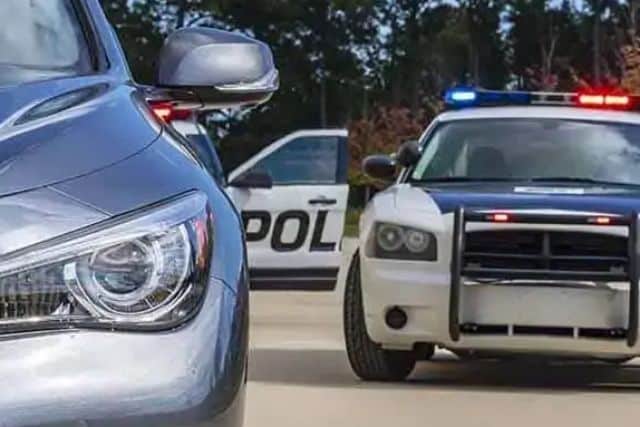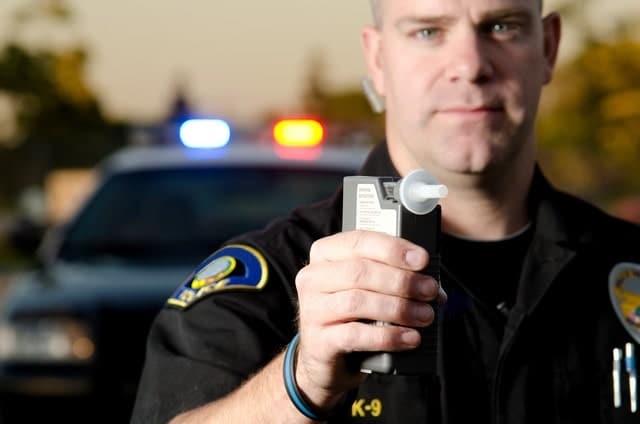What Is Divided Attention?
Divided attention refers to the ability of a driver to distribute their attention and focus on multiple tasks simultaneously while operating a vehicle. It involves dividing one’s attention between the primary task of driving and other secondary tasks or stimuli, such as using electronic devices, interacting with passengers, or engaging in other activities that may divert attention from the road.
Impaired driving is a criminal offense with several consequences, including a license suspension. Impaired driving can affect a driver’s ability to drive safely by negatively impacting the driver’s cognitive and physical abilities necessary for multitasking on the road
If an officer suspects that a driver is impaired, they may initiate a traffic stop. Police officers use Field Sobriety tests (FSTs) after making a traffic stop to determine if a person is driving under the influence of either drugs or alcohol.
These FSTs assess the driver’s ability to perform multiple tasks simultaneously. There are three types of field sobriety tests in Kansas City:
- The one-leg stand test
- The walk-and-turn test
- The Horizontal Gaze Nystagmus (HGN)
But only the one-leg stand and walk-and-turn tests are divided attention tests. Officers may also ask questions as the drivers perform these tests, requiring them to divide their attention.
For example, asking the driver their middle name while requesting their license. If the driver fails to perform these tasks simultaneously, the police officer will have probable cause to arrest them for DUI.
The officer will confiscate their license and place them in custody. They will remain in custody until their hearing unless they can post bail.

Divided Attention Tasks
The one-leg stand and walk-and-turn test assesses the driver’s physical and mental ability. It tests their ability to follow instructions while performing simple physical tasks.
Divided attention reduces the driver’s concentration on one task. It allows the driver to divide their attention to other tasks going on at once. Further, most sober drivers can complete the tests without difficulty.
Before the officer administers the test, they will interrogate the driver. The interrogation is done to assess the individual’s brain function. The officer will also confirm that the driver is not physically or mentally impaired.
The officer uses the test to look for signs of intoxication, such as:
- Ability to follow precise instructions
- Balance
- Coordination of limbs
- Clear vision
- Paying attention
- Processing of information
- Steady reactions
A driver who fails in any of the above categories or cannot complete the test is likely intoxicated.
The One Leg Stand
The one-leg stand test checks the driver’s balance and ability to follow instructions. It has two stages: the balancing stage and the counting stage.
The police officer asks the driver to stand on one foot, approximately six inches off the ground.
The foot should be straight, with toes pointing forward and parallel to the ground. The driver also stares at the upraised foot while counting aloud in thousands.
They must not hop, sway or put their foot down before the officer stops them. Doing so may signal a high Blood Alcohol Concentration (BAC) level.
The Walk and Turn
The walk-and-turn test begins with the officer instructing the driver to take nine steps. The driver is to walk in a straight line while taking heel-to-toe steps. Further, they must return on one foot in the same manner.
The officer will often look for the following signs:
- Failure to follow instructions
- Failure to maintain balance when listening to instructions
- Failure to touch your feet heel to toe
- Using your hands to maintain balance
- Taking the wrong number of steps
- Failure to stay in a straight line
- Failure to maintain balance when turning
If the officer finds two or more signs, they may consider you impaired. The test must be performed under safe test conditions. Further, the driver should have enough room to complete nine heel-to-toe steps.

How Accurate Are Divided Attention Tests?
The National Highway Traffic Safety Administration (NHTSA) provides training programs to improve the administration of FSTs.
These programs show officers the tools to determine intoxication through tests. Yet, they may still administer these tests improperly.
A wrong test administration affects the officer’s ability to spot clues erroneously. This diminishes the level of reliability of the test in establishing intoxication.
FSTs, when used in combination with each other, are more effective in proving intoxication. Administering the three tests together ensures maximum accuracy in the results.
Walk and turn tests are 68% in determining an individual’s level of intoxication. In comparison, the one-leg stand has a 65% accuracy rate.
Challenging a Divided Attention Test
Divided attention tests are not hundred percent accurate. This creates room for individuals to challenge them.
Police officers should be trained to administer these tests correctly. Leaving out part of the test instructions could cause the driver to make mistakes.
Individuals with medical conditions may experience difficulty when performing tests. For instance, a driver with an injury may have limited muscle movement. Most people lack natural coordination due to weight or other factors. They may be unable to complete the test without swaying or stepping out of the straight line.
Additionally, the stress of getting stopped by the police can affect the individual’s ability to focus. They may count the wrong number or keep asking for task clarification. although these actions do not usually suggest that a person is intoxicated. Still, the officer may view their inability to remember instructions as a sign of intoxication.
Further, performing divided attention tests in harsh weather conditions is more difficult. Rain, snow, wind, or poorly lighted areas can affect performance. An experienced attorney can challenge the test results in court.

Why You Should Contact a DUI Lawyer
If you got arrested after a field sobriety test, the Benjamin Law Firm, LLC can help. Our lawyers are ready to analyze your case and prepare an effective defense strategy for you.
A DUI conviction comes with several life-changing consequences and a criminal record. We know these challenges and will fight to give you excellent representation.
We have handled many DUI cases and thoroughly understand DUI law. We can answer all your questions, including, “What evidence does a police officer need to arrest you?“
Our attorneys know that FSTs and breath tests can’t be trusted. So, we may be able to challenge the admissibility of the evidence presented by the officer in court.
We can identify weaknesses in the procedures used in administering the tests. We can also argue that the officer lacked the training to administer tests that require divided attention.
We can address all your concerns at the Benjamin Law Firm, LLC. Our team will fight to get your penalties reduced or dismiss your charges. Contact us for help today.
















